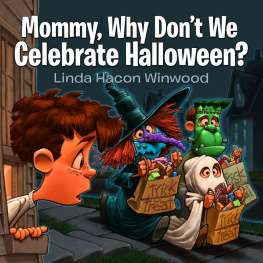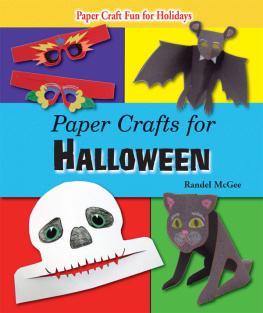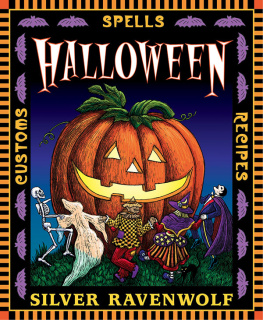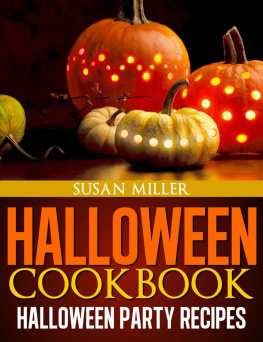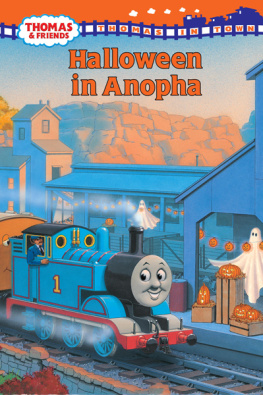Perkowitz - Frankenstein
Here you can read online Perkowitz - Frankenstein full text of the book (entire story) in english for free. Download pdf and epub, get meaning, cover and reviews about this ebook. year: 2018;2003, publisher: Pegasus Books, genre: Home and family. Description of the work, (preface) as well as reviews are available. Best literature library LitArk.com created for fans of good reading and offers a wide selection of genres:
Romance novel
Science fiction
Adventure
Detective
Science
History
Home and family
Prose
Art
Politics
Computer
Non-fiction
Religion
Business
Children
Humor
Choose a favorite category and find really read worthwhile books. Enjoy immersion in the world of imagination, feel the emotions of the characters or learn something new for yourself, make an fascinating discovery.
- Book:Frankenstein
- Author:
- Publisher:Pegasus Books
- Genre:
- Year:2018;2003
- Rating:3 / 5
- Favourites:Add to favourites
- Your mark:
- 60
- 1
- 2
- 3
- 4
- 5
Frankenstein: summary, description and annotation
We offer to read an annotation, description, summary or preface (depends on what the author of the book "Frankenstein" wrote himself). If you haven't found the necessary information about the book — write in the comments, we will try to find it.
Frankenstein — read online for free the complete book (whole text) full work
Below is the text of the book, divided by pages. System saving the place of the last page read, allows you to conveniently read the book "Frankenstein" online for free, without having to search again every time where you left off. Put a bookmark, and you can go to the page where you finished reading at any time.
Font size:
Interval:
Bookmark:


FRANKENSTEIN
Pegasus Books Ltd.
148 W 37th Street, 13th Floor
New York, NY 10018
Compilation copyright 2018 Sidney Perkowitz and Eddy Von Mueller
First Pegasus Books edition January 2018
Interior design by Maria Fernandez
All rights reserved. No part of this book may be reproduced in whole or in part without written permission from the publisher, except by reviewers who may quote brief excerpts in connection with a review in a newspaper, magazine, or electronic publication; nor may any part of this book be reproduced, stored in a retrieval system, or transmitted in any form or by any means electronic, mechanical, photocopying, recording, or other, without written permission from the publisher.
Library of Congress Cataloging-in-Publication Data is available.
ISBN: 978-1-68177-629-3
ISBN: 978-1-68177-697-2 (e-book)
Distributed by W. W. Norton & Company
Dedicated with love to my dear wife, Sandy, and to Mike, Erica, and Nora, just for being there. They are a great comfort, a great joy, and a great support when Im writing a book and when Im not.
SP
For my mom, and the love, support, and understanding that got us through all the Dark & Stormy Nights; and for all my Little Monsters: T., C., Z., and always and especially for K.
EVM
CONTENTS
by Catherine Ross Nickerson
by Dwayne Godwin and Jorge Cham
by Laura Otis
by Steven J. Kraftchick
by Evan Lieberman
by Kevin LaGrandeur
by Alexis Gambis
by Jaime Paglia
by Eddy Von Mueller
by Eddy Von Mueller
by Carol Colatrella
by Sidney Perkowitz
by Jay Goodwin and David Lynn
O n a rainy night in 1816, eighteen-year-old Mary Wollstonecraft Shelley sat with her new husband, the celebrated poet Percy Bysshe Shelley, and their friends in a villa on the shores of Lake Como in Italy; among them, the poet and adventurer Lord Byron. To pass the time Byron suggested that each member of the company create a ghost story. In response, Mary Shelley drew on her imagination, her own life, and the science of the time to write Frankenstein, or The Modern Prometheus.
Shelleys tale about a tormented creature created in a laboratory by the fatally ambitious scientist Victor Frankenstein was published, at first anonymously, in 1818. The power of her story has never since waned. With the audacity of its central idea and the richness of its themes, Frankenstein has become a literary touchstone, a cultural phenomenon, and a global iconand in its bicentennial year of 2018, this story still has lessons for us in the 21st century.
Few stories have reached the worldwide prominence that Frankenstein enjoys. It has been translated and adapted countless times, and versions of Shelleys novel have appeared in every possible medium and in every conceivable variation. The novel itself has not been out of print in nearly two hundred years and has appeared in about five hundred editions according to one source, perhaps more than any other work of fiction. It is routinely read by students from middle school to graduate school. Scholarly interest in the work is perennially high. Even a cursory look in Google Books or a university library reveals hundreds of books and articles in many languages devoted to literary and cultural analysis of Shelleys work, its milieu, and its popular forms. Its impact is undiminished in the digital age: in 2013, when reproductions of Mary Shelleys Frankenstein notebooks went online, the response was overwhelming. The site drew almost sixty thousand visitors from around the world in its first twenty-four hours.
Frankenstein has inspired a multitude of stage, screen, and television adaptations as well. The classic film version is the 1931 Frankenstein , directed by James Whale with Boris Karloff as Dr. Frankensteins creature, which was a box office hit in its day. Now it is acknowledged as one of the 100 all-time greatest American films chosen by the American Film Institute, and contemporary critics give it a perfect 100% rating on RottenTomatoes.com, but it is only the peak of a mountain of Frankenstein films. These range from vintage (the earliest was a 1910 short from Thomas Edisons film company) to contemporary, including James Whales follow-up Bride of Frankenstein (1935); Abbot and Costello Meet Frankenstein (1948), which, along with Mel Brookss Young Frankenstein (1974), is listed by AFI among the 100 funniest American movies; and Kenneth Branaghs Mary Shelleys Frankenstein (1994), with Robert DeNiro as the Monster. Most recently, Haifaa Al-Mansour directed a new Mary Shelley biopic in 2017. A big-budget reboot of Frankenstein is on the way, slated for release in 2019.
One guide lists hundreds of Frankenstein -related films and television shows, many with only a tenuous connection to the original story. Another compilation, limited to versions that expressly attempt to follow Shelleys novel, still lists dozens of feature films and TV productions. Entering Frankenstein in a key-word search on the movie site IMDb brings up about one hundred entries since 1994 alone. The phenomenon is a global one: Frankenstein films have been made in the United States, the United Kingdom, Germany, Spain, Turkey, Japan, Canada, and Czechoslovakia. In addition to attracting audiences around the world, Frankenstein as a media property runs the gamut in terms of genre, budget, tone, and era, from cheaply made exploitation films to lavish period productions, from 50s teen-pics to racy adult movies in the 1970s. Indeed, almost no movement in the evolving art of the moving image is without its take on Shelleys timeless creation.
Clearly the ideas and emotions engendered by Shelleys story cut across decades and centuries and across cultural and national lines to find wide expression, partly because it has been continually adapted and reinterpreted. The text has been opened up to explore the many potential perspectives of the novels rich cast of characters. For example, in Paul McGuigans 2015 film Victor Frankenstein , the story is told from the viewpoint of Dr. Frankensteins assistant; in a recent theatrical production in Newcastle, UK, titled Dr. Frankenstein (written and directed by Selma Dimitrijevic), the scientist who creates life is a woman, Dr. Victoria Frankenstein; and in 2011, Danny Boyle directed a well-received stage version of Frankenstein (written by Nick Dear) at Londons Royal National Theatre, in which Benedict Cumberbatch and Jonny Lee Miller alternated the roles of Victor Frankenstein and his creature.
Manifestations of Frankenstein are just as prevalent elsewhere in popular culture. Beginning with the iconic image of Boris Karloff as the lurching Monster with electrodes in his neck from the 1931 film, they have continued nonstop. The phrase Frankensteins monster is widely understood to represent a horrific, menacing, and shambling creature created by some other entity and used in every imaginable context; for instance, to cast slurs in the heated US presidential campaign of 2016. In another example, the very prefix franken has come to mean an ill-chosen collection of parts or something badly out of kilter. In 1992, Paul Lewis, an English professor at Boston College, first called genetically modified food frankenfood. The name has stuck and is also applied to junk food. Then there is frankenstorm for violent weather and frankenword for awkward portmanteau words like docudrama or, self-referentially, frankenword itself.
Frankenstein has also been interpreted in less threatening ways for the younger set. Boxes of Franken Berry strawberry-flavored breakfast cereal for kids, sold by General Mills since 1971, come adorned with a pink cartoon version of the Monster. Or children can play with Frankenstein -themed dolls, action figures, and even Frankenstein plushies. Described as making the Monster more adorable than ever for ages three and up, these stuffed versions come complete with soft electrodes. Kid-friendly versions of the Monster turn up on Saturday morning cartoons like The Groovy Ghoolies (19701971) and The Drac Pack (1980), and in animated features like Hotel Transylvania (2012) and books for young readers like Lola M. Schaeffer and Kevan Atteberrys Frankie Stein. And of course, Frankenstein and his monster both remain stalwart features of the annual Halloween masquerades in the United States.
Next pageFont size:
Interval:
Bookmark:
Similar books «Frankenstein»
Look at similar books to Frankenstein. We have selected literature similar in name and meaning in the hope of providing readers with more options to find new, interesting, not yet read works.
Discussion, reviews of the book Frankenstein and just readers' own opinions. Leave your comments, write what you think about the work, its meaning or the main characters. Specify what exactly you liked and what you didn't like, and why you think so.


